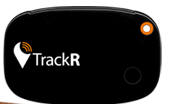
I’m really good finding digital things. Ask me to find an article I wrote 20 years ago and I can locate it within seconds either on my PC or online. But I can’t say the same when it comes to physical objects like my keys and wallet.
I can sometimes find my cell phone just by calling it if it’s in silent mode. But there’s an app for that. Apple’s Find My Phone service makes it easy to find any iOS device as long as it’s turned on and has a working battery – even if it’s on silent. And the same is true for Android devices thanks to Google’s Android Device Manager that can locate and ring your phone regardless of whether the ringer is turned on – again as long as it’s turned on and working.
And now there are solutions for keys, wallets and other physical objects.
Kensington offers its Proximo key fob that uses low power Bluetooth to locate and ring the little keychain accessory by running an app on our smartphone. Proximo works with Apple and Samsung smartphones but a competing product called Trackr by Phone Halo works with Samsung phones and Android devices 4.3 devices as well as recent model iPhones and iPads.
And, in addition to a keychain fob, the Trackr has an optional wallet tracker.

I’ll get to the not-so-great “out of the box” experience in a moment but once you have the Trackr set-up, it’s really easy to use. You download the app and use it to pair up to 10 devices and you can use the app to locate the device, figure out how far it is from you and ring it. It’s not the loudest ring in the world but unless your keys or wallet are under a couch cushion (which is sometimes the case at my house) you should be able to locate it.
If it’s not at home, all is not lost. The app can try to display the location of the key fob or wallet Trackr on a map, regardless of where it is.
Phone Halo also said that the device supports “crowd GPS” which enables others with the app to help you find your device in case it’s closer to them.
As I mentioned, the “out of box” experience was less than satisfactory. It’s not the first tech device I’ve used that has amazing technology but really bad industrial design. The Fitbit Force – for example — is a great exercise watch with a horrific band, which is ironic because people have been making good watch bands for centuries. That can’t be all that hard to get right.
And it’s not as if we need geniuses to figure out how to make it easy open packages or build devices that make it easy to insert batteries.
My frustration with the Trackr started when I tried to open the rigid plastic package. My “wrap rage” went through the ceiling as I had to use scissors to cut through not one but two plastic packages to get to the wallet device.
Next came the frustration of inserting the two batteries into the device. There is a little shelf that pulls out and after several tries, I finally figured out that it you leave it in part way and slip in the batteries, it’s actually possible to close it without the batteries popping out. A little bit of documentation on that trick would have been nice.
My main frustration came when I tried to close the round key fob. I spent nearly a half hour without any luck until I called their PR person who sent me a link to a YouTube video that demonstrated how you can use the palms of your hand to twist it shut. That was about as far from intuitive as I’ve ever seen. And I still haven’t figured out how to attach the little string that enables you to hook it up to your keychain though I’m told there’s a video for that too.
A company spokesperson told me that I’m not the only one with these complaints and that they’re re-engineering them to be easier to set up.